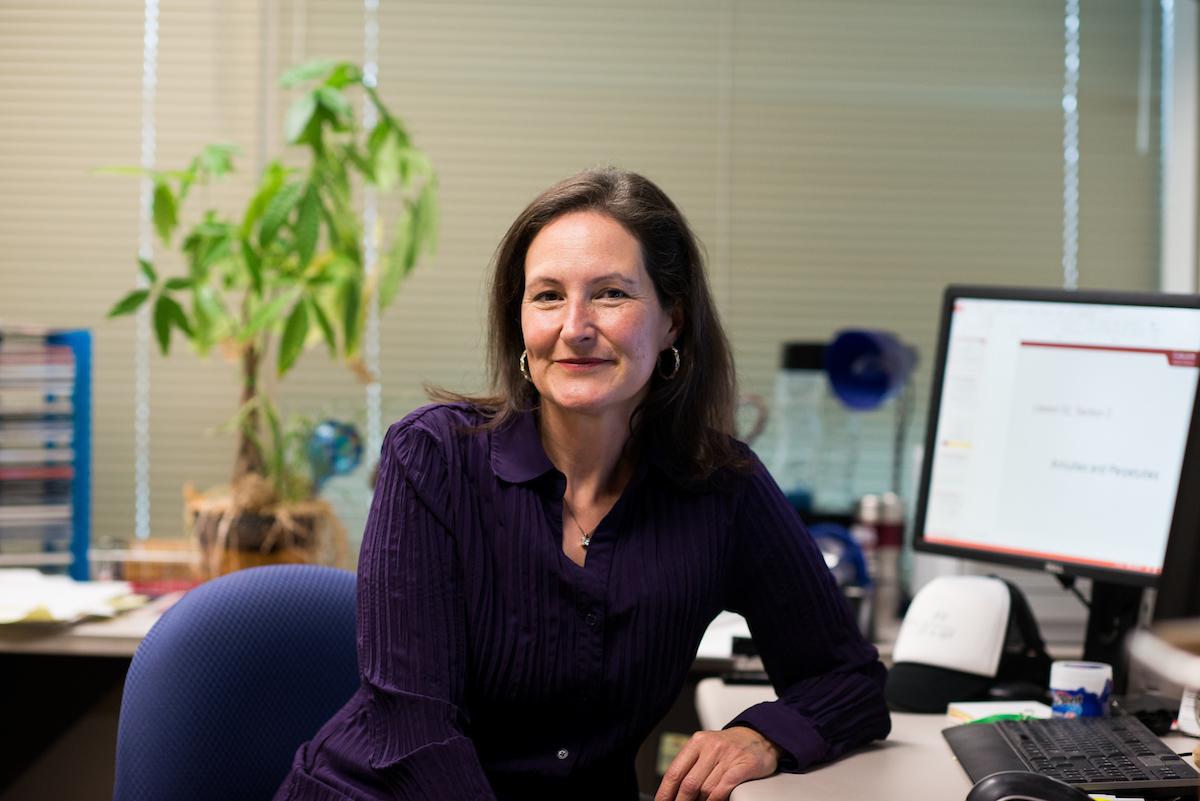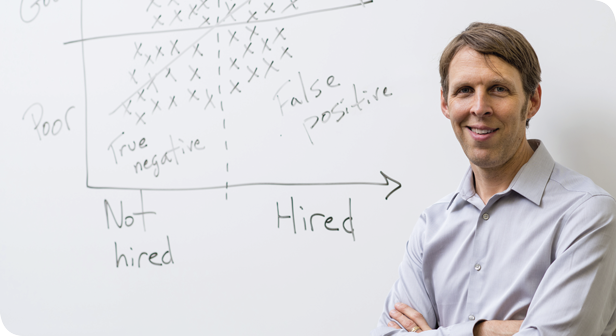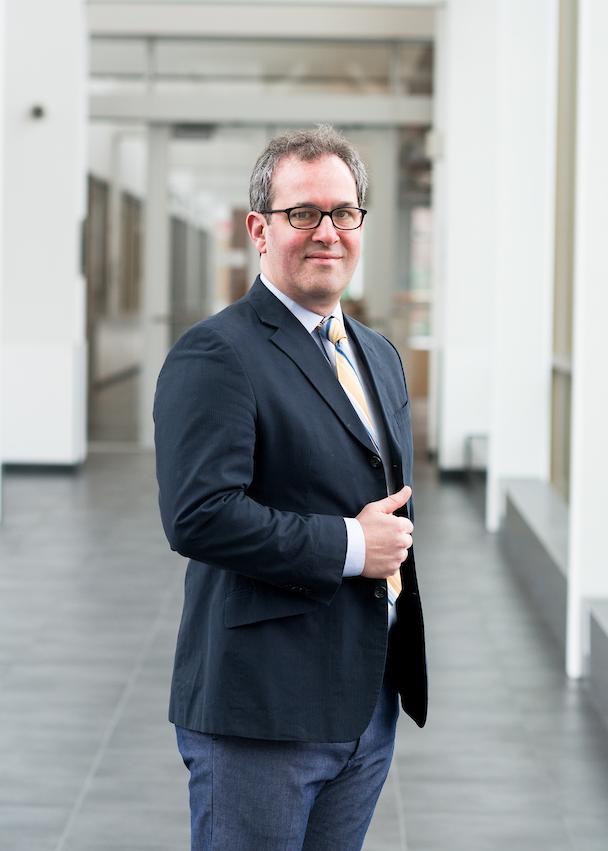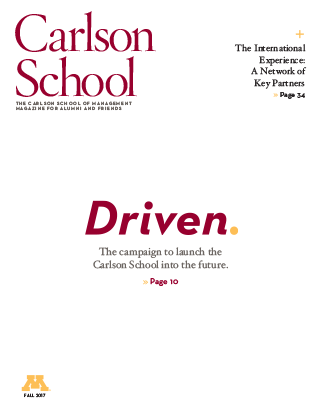
A Force for Innovation
Tuesday, November 14, 2017
In recent years, the demand by business schools for new faculty has never been greater. Outstanding faculty allows us to make more contributions in research, teaching, and assistance to the business community. High-quality faculty is a tide that raises all boats. Our school, our students, and our community all benefit.
The Dark Side of IT
Information and Decision Sciences Assistant Professor Jason Chan has a strong interest in information technology. Particularly the impact it has on health and society. “We see an interlink between technology and people’s lives,” he says. “It changes the way we live.”
What got him interested in the topic was when he was deciding what to do for his PhD. “I wanted my work to be impactful and something a lay person could understand,” he says.
So, one of his first studies looked into the world of Craigslist, the well-known classified advertisement website. Craigslist has numerous sections, but what caught Chan’s eye were the personals. “People are trying to solicit casual sex,” he says. “I couldn’t help but wonder if people got STDs as well since they are hooking up and not knowing sexual histories.”
Craigslist is unique in that it opens in one city at a time, so it has a relatively slow expansion rate. As Chan began compiling data from Craigslist and tracked this expansion, he found a match to a growth rate of HIV. “It was a very strong link. No matter what I did to the data, this link was always there,” he says.
Chan then took his work deeper. There are two ways people can solicit casual sex on Craigslist—through the personals section or through erotic service ads. “Sex workers are operating in this space,” he says. “I tried to go further in which one of the sections is causing this climb in HIV. It turns out it’s coming from the personals section—that is driving the increase in HIV.”
When the owners of Craigslist heard about the study, “Internet’s Dirty Secret: Assessing the Impact of Online Intermediaries on HIV Transmission” (MIS Quarterly, 2013), they went in and made website changes. “On entry and in the personals section there is a clear warning page. It says if you are trying to hook up with someone online this is not a safe practice. Get yourself checked,” Chan says. “The website is getting more cautious about things that could happen from a user’s point of view.”
Another IT question Chan had was the relationship between the internet and hate crimes. “Compared to the offline world, people now can access different ideologies online,” he says. “In the past, such groups could only expand slowly. Now such views are no longer contained but are becoming more liberated.”
So are people getting more racist and does this convert to more racial hate crimes? Chan found a positive link between the internet and an FBI hate crime data set. “What is happening is the online medium is creating these lone wolves,” he says. “People believe such ideologies are OK and they get converted to crimes out there. Such things happen more in areas where racial segregation is higher.”
Interestingly Chan’s paper on the subject, “The Internet and Racial Hate Crime: Offline Spillovers from Online Access” (MIS Quarterly, 2016) was accepted for publication in early 2015. A few months later, a young man named Dylann Roof walked into a church in Charleston, South Carolina, and killed nine African Americans. “In that incident, the description of that person matched up well with our paper,” Chan says. “Tend to be a lone wolf. Visiting racially charged websites.”
Finding solutions to this issue is tougher. Should there be barriers on freedom of speech online? “There’s a lot of fake news out there and we need to do a better job of cleaning up content online,” Chan says. “We need to make sure the things we see online are correct and properly reported. There has to be some control, but not full censorship out there.”
Chan says IT is a rich field of research. “Technology is growing at a very fast speed and at the same time leaving a lot of gaps in how we function as a society,” he says. “Most of the attention is on the good things that IT can give us. There’s a lot of excitement around that and that’s natural. But technology also has this dark side to it. I’m hoping this area of research will continue with what I started.”
A.K.A. H-Mo
Nicknames. That’s how Matthew McPheeters, ’16 MD/MBA, remembers Finance Senior Lecturer Helen Moser, or H-Mo, as she became known. “On the first day of class, everyone would introduce the student next to them to the class and the introduction had to include a nickname,” he says. “I’m not sure how she did it, but I swear by day two H-Mo knew everyone in the class by their nickname.” Although it sounds like a small thing, McPheeters says, it really added to the atmosphere that Moser created that made learning finance enjoyable. He does offer one postscript to the topic however. “Looking back, I think a better nickname for H-Mo may have been Pro-Mo, for Professor Moser,” he says.
“I’ve read a lot of research that students learn better in an environment where they are recognized as a person, not just a number,” says Moser, who was recently named one of the Outstanding Faculty of the Year by Part-Time MBA students.
“Nicknames for me are easier to remember and a lot of times they say something about the person, which I think is important.”
McPheeters considers Moser the most approachable and engaging professor he had during his MBA. “Her financial management course during my first semester was easily my hardest course,” he says. “However, she created an environment that pushed me to perform, partly because I did not want to disappoint her.” McPheeters adds that the primary reason he took a financial decision-making course his second semester was because Moser was the instructor.
Because of the nature of her class, Moser gets a mixed assortment of students. Some have degrees in finance and have worked in the field while other may have been music or English majors. “We have both poets and quants,” she says. “The poets come to finance with a certain level of anxiety and trepidation because they think it’s going to be a very difficult course,” she says.
To alleviate the anxiety, Moser assembles the class into teams. “All the teams have one strong finance person because there should be cooperation in learning rather than competition,” she says. Here also is where nicknames are helpful. “I become more approachable and hopefully that encourages students to ask questions and to participate in discussions; this improves the learning environment for everyone,” she adds.
Now a neurosurgery resident at the University of Buffalo, McPheeters says the biggest takeaway from Moser’s classes was learning that all financial models are wrong; some are just more useful than others. “H-Mo taught me that often times the most valuable takeaway from building financial models is not the final number, but the understanding of how different factors will interact with one another when changes inevitably occur,” he says.
Exchanging Ideas and Experiences
Since 1969, students in the MA-HRIR program have annually presented the Herbie Award to one outstanding instructor. Named after legendary HR academic Herbert Heneman, the Herbie is given to those faculty members who represent the absolute best in teaching. For the past two years, this honor has been given to Curtis L. Carlson Professor of Industrial Relations John Kammeyer-Mueller.
When Kelly Dahlman, ’16 MA-HRIR, reflects on Kammeyer-Mueller as an instructor, the first word that comes to her mind is energetic. “He teaches in such a lively, witty, and engaging manner that students hardly remember they are in a class until they realize it’s time to go,” she says, adding that Kammeyer-Mueller also takes care to humanize himself as a professor. “He shares about his life and asks students about their world, which creates a culture of trust in the classroom.”
Kammeyer-Mueller says that he most looks forward to exchanging ideas related to students’ personal experiences at work. “Students at Carlson are especially good at using concepts from the academic literature to evaluate and manage their own work lives,” he says.
Dahlman took Staffing, Training, and Development from Kammeyer-Mueller, knowledge that has served her well in her post-graduate life. After leaving the Carlson School, she joined General Mills as a human resource business associate. For her first rotation, she moved to Joplin, Missouri, where one of General Mills’ refrigerated dough plants is located.
She says what she appreciates most about Kammeyer-Mueller’s class was that, in addition to teaching foundational content, he developed methodical, critical thinking in his students. “Through this type of thinking, we learned to not immediately jump to a solution for a task, but to understand the issue, the principles behind it, and the opportunities that could arise through varied solutions,” she says.
As an example, Dahlman says when she interned with General Mills in 2015, she brought her notes from Kammeyer- Mueller’s class to help her approach her project of developing a training program for the flour mill. “As I was working on this project, I recalled Professor Kammeyer-Mueller’s teachings about how individuals learned and transferred knowledge,” she says.
Dahlman says what she remembers most about Kammeyer-Mueller is how she looked forward to his class. “I thought his classes were captivating because of his unbridled enthusiasm and how he could seamlessly teach content in an entertaining and educational manner,” she says.
Kammeyer-Mueller has still another takeaway he tries to instill in his classes. “My main goal in class is encouraging students to be willing to question their own assumptions and the assumptions of others—especially mine!” he says.
Improving Education Investment
In June, Work and Organizations Associate Professor Aaron Sojourner finished a year of service as a senior economist on the U.S. President’s Council of Economic Advisers (CEA), where he helped prepare briefings on the labor market and education topics for Presidents Obama and Trump and other White House policymakers. “CEA’s job is to bring the best, most relevant evidence into the room in a timely, digestible form to support high-quality decision making,” he says. The position was a dream come true for Sojourner. “I care a lot about policy and it was amazing to spend a year bringing economic insight to decision making at that level,” he says.
Sojourner’s policy interests include K-12 education policy, especially human resource management in school districts. “I’m particularly focused on teachers and how we can support a productive, effective teacher workforce. Why? Because evidence shows that teachers make a huge difference in the skills and capabilities our kids acquire,” he says.
Skills are acquired through a long process of development and investment. “Instead of enjoying resources now, we invest because it pays off tomorrow. Corporate R&D and machinery purchases are examples of investment,” he says. “So is our education system. Investing in kids requires resources today and pays off down the road.”
Research shows that, among children who are randomly assigned to a highly effective kindergarten teacher instead of an average one in the same school, the children who got the better teacher for that one year are earning more money in adulthood and more likely to own a home decades later, Sojourner says. “Better kindergarten teaching is worth hundreds of thousands of dollars a year in terms of kids’ future and their productivity,” he says.
This drives some of his own research. “We’re trying to find ways to help schools be most effective because they’re one of the foundations of the future prosperity of our communities,” he says. His first paper on the subject, “Identification of Peer Effects with Missing Peer Data: Evidence from Project STAR” (Economic Journal, 2013), looks at the effects of how students are grouped into classes. Usually schools have little control over which children they serve, but they have more control over how students are grouped into classes. Sojourner analyzed data from a setting with over 75 schools where students and teachers were randomly assigned to first-grade classes and measured the effects of classmates on student achievement. “We found that peers matter a lot for low-achieving students but little for high-achieving students,” he says. “If you want to raise average achievement and to reduce achievement gaps, you want to find ways to encourage mixed-achievement classrooms.”
Sojourner’s education research has not gone unnoticed in his field. In 2015, he received the prestigious John Dunlop award from the U.S. Labor and Employment Relations Association. The award is presented for outstanding academic contributions of national significance, and its committee specifically pointed to Sojourner’s K-12 work as part of the reason he was honored.
"Why we give."
Jim and Mary Lawrence want to plug what they call the “doughnut hole” in the tenure track.
“When you get a PhD, we all know you are desperate for any job you can have, although that is less true of business schools” he says. “When you are offered a job at the U, you most likely will be delighted to take it.” He notes that the Carlson School has a proven track record of selecting the best of the next generation of faculty coming out of PhD programs.
The doughnut hole typically appears after the faculty member’s third or fourth year, or just after tenure. “At that time, the faculty member will have published probably the best research they will publish in the course of their lives,” he says. The research is out there for other institutions to see it. Let’s say they happen to need an expert on labor economics in Eastern Europe and there is a professor at the Carlson School who has written about it. Then they swoop in.
“At that point, the professor will be judging his or her options,” he says. “’OK, I’m pretty good at my discipline, but will I be better off at a big brand school?’ Stanford, Harvard, or Wharton might be able to steal our faculty.”
This is where the Lawrence Fellowship comes in. The purpose of the fellowship is to hold the best junior and mid-level faculty. “Hold them until we give them tenure, and just after,” he says. “It allows Dean Sri Zaheer and her committee to figure out who the people we hired four to eight years ago turned out to be the stars. Let’s give them more money or give them time off to do more wonderful research.”
Mary says the Fellowship is a great opportunity to retain the best at the Carlson School. “This is a critical time to keep your faculty happy and give them extra salary or some unencumbered time to do research and to let them know we appreciate what they are doing,” she says.
Five faculty members were honored as the inaugural Lawrence Fellows earlier this year. They include Information and Decision Sciences Assistant Professor Gordon Burtch and Associate Professor Yuqing Ren, Strategic Management and Entrepreneurship Assistant Professor Aseem Kaul, and Work and Organizations Assistant Professor Aaron Sojourner and Associate Professor Colleen Manchester.
“We met the Lawrence Fellows recently and they are just outstanding,” Jim says. For example, “We have this one woman [Manchester] who is a Stanford undergrad and a Stanford PhD and we got her, not Stanford B-school! That’s just fantastic.”




